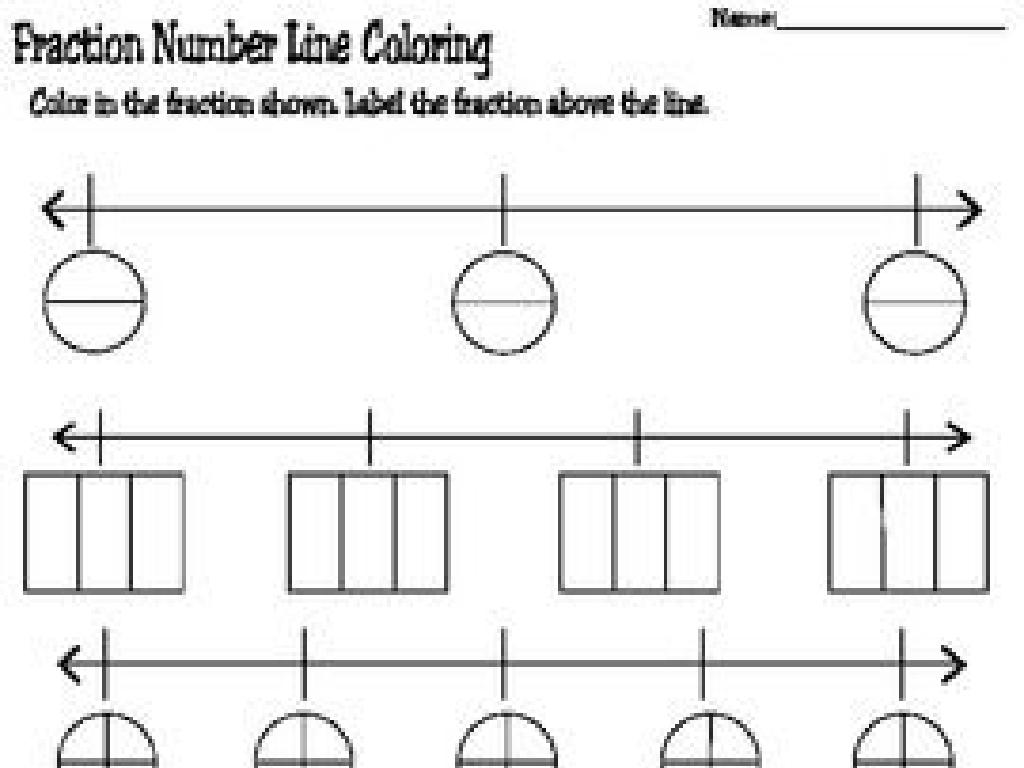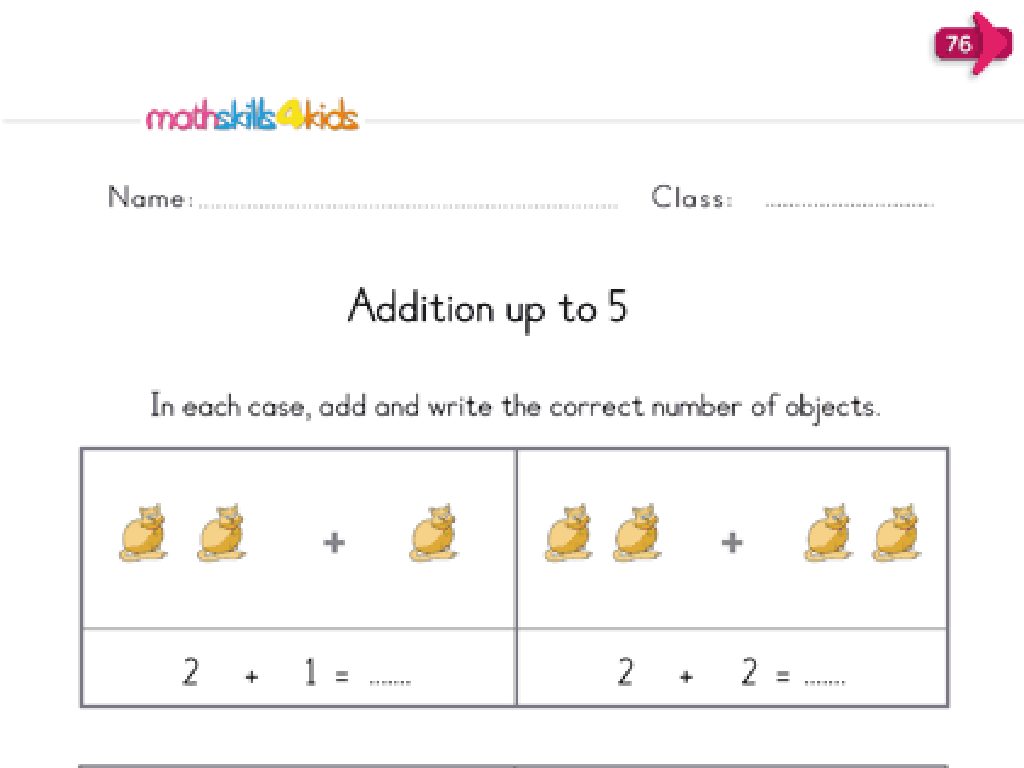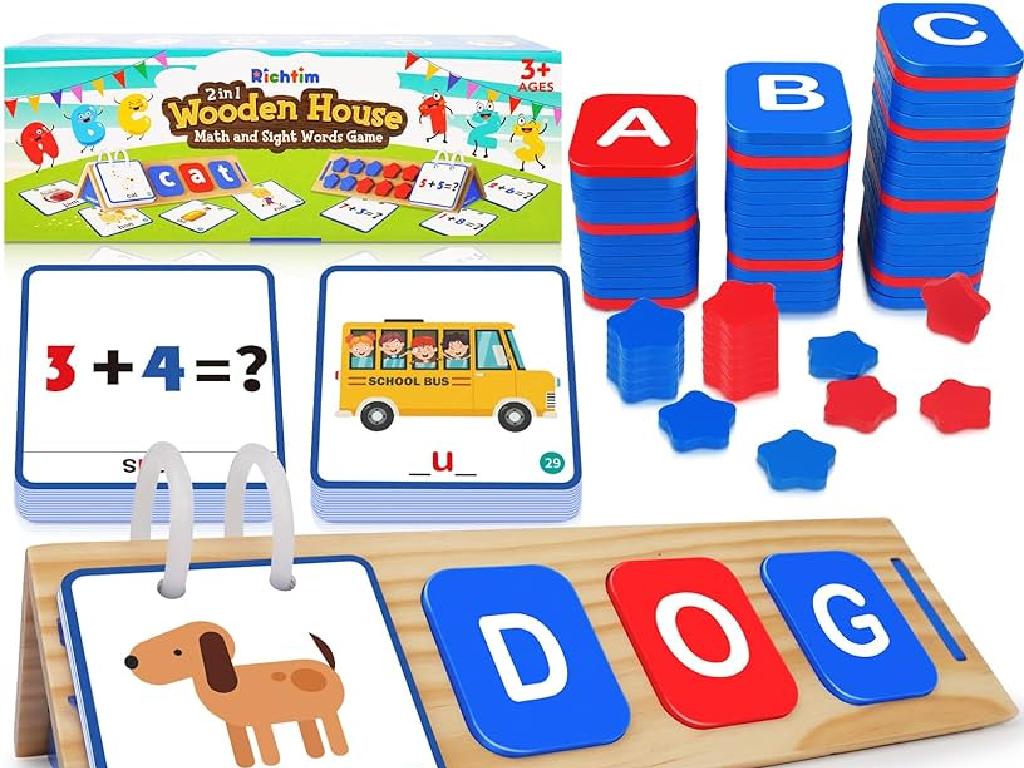Which Sign Makes The Number Sentence True? - Up To 10
Subject: Math
Grade: First grade
Topic: True Or False Equations
Please LOG IN to download the presentation. Access is available to registered users only.
View More Content
True or False Equations: Comparing Numbers
– What are true or false equations?
– Comparing numbers up to 10
– Numbers can be bigger, smaller, or equal
– Using , and = signs
– means greater than, = means equal to
– Practice with examples
– 5 6 is true, 4 = 4 is true
|
Begin the lesson by explaining that equations can be true or false, just like statements. Introduce the concept of comparing numbers using signs such as less than (), and equal to (=). Use number lines and visual aids to help students understand the concept of magnitude and equality. Provide clear examples using numbers up to 10 to illustrate how to use each sign correctly. For instance, show that 5 is less than 8, 7 is greater than 6, and 4 is equal to 4. Encourage students to participate by coming up with their own examples and solving them to determine if they are true or false. This will help solidify their understanding of number comparison and prepare them for more complex math concepts.
Understanding Equations in Math
– Equations are number sentences
– Equations can be true or false
– Special signs show true or false
– Like 5 + 3 7 true?
|
This slide introduces first graders to the concept of equations as number sentences that can be either true or false. Emphasize that equations are not just random numbers; they tell us something about the numbers we see. Explain that we use signs like ‘=’, ” to determine if the equations make sense or not. For example, ‘2 + 3 = 5’ is true, but ‘2 + 3 > 5’ is false. Use simple examples with numbers up to 10 to illustrate the concept. Encourage the students to think of equations as puzzles that they need to solve to find out if they are true or false. Prepare to have the students practice creating their own equations and determining their truthfulness in class.
Meet the Signs!
– Equal sign (=) meaning
– ‘=’ means two things are the same, like 4 crayons = 4 crayons.
– Greater than sign (>) meaning
– ‘>’ means one side has more, like 5 cookies > 3 cookies.
– Less than sign (<) meaning
– '<' means one side has less, like 2 birds < 4 birds.
– Practice with signs
|
This slide introduces the basic mathematical signs for equality and inequality to first graders. The equal sign indicates that two quantities are the same, the greater than sign shows that one quantity is larger than the other, and the less than sign indicates the opposite. Use everyday examples to illustrate these concepts, such as comparing sets of toys, pieces of fruit, or numbers of books. After explaining each sign, engage the students with simple practice problems where they choose the correct sign to make the number sentence true. For example, present them with 3 vs. 5 and ask which sign would fit between them. This interactive approach will help solidify their understanding of these fundamental mathematical concepts.
Making Number Sentences True
– Same numbers mean true equation
– If 4 = 4, then it’s true!
– Different numbers mean false
– If 5 = 7, then it’s not true.
– Choose the right sign for truth
– Is it 3 5 to be true?
– Practice with numbers up to 10
|
This slide introduces the concept of true or false equations to first graders. Start by explaining that equations are like sentences in math that can be true or false. If both sides of the equation have the same number, then the equation is true. If they have different numbers, the equation is false. Teach them how to use the less than () signs to make a number sentence true. Use examples with numbers up to 10 to ensure understanding. For the activity, provide students with a set of equations and ask them to determine if they are true or false, and if false, to correct them by choosing the right sign. This will help solidify their understanding of the concept.
Understanding Equality and Inequality
– True equation: 4 = 4
– Both sides are the same, so it’s true!
– False equation: 3 > 5
– Since 3 is less than 5, it’s not true.
– Practice time together
– We’ll solve examples as a class.
– Learn to check if true or false
|
This slide introduces the concept of true and false equations to first graders. Start by explaining that equations can be like a seesaw, they are balanced (true) when both sides are equal. Show them that 4 = 4 is true because both sides have the same number. Contrast this with 3 > 5, which is false because 3 is smaller than 5, not larger. Engage the class with interactive practice, asking them to come up to the board to try their own equations, or work in pairs to determine if number sentences are true or false. Reinforce the concept that the ‘=’ sign means both sides are the same, and the ‘>’ or ‘<' signs show one side is larger or smaller than the other.
Your Turn: True or False Equations
– Decide if 5 _ 3 is true or false
– Decide if 2 _ 2 is true or false
– Decide if 7 _ 8 is true or false
– Choose the right sign: , or =
– Is 5 greater, less than, or equal to 3?
|
This slide is an interactive class activity for first graders to understand the concept of true or false equations. Students will use their knowledge of numbers up to 10 to determine which mathematical sign makes each number sentence true. Teachers should guide students through the process of comparing numbers and deciding whether to use the less than (), or equal to (=) sign. For example, in ‘5 _ 3’, students should recognize that 5 is greater than 3 and therefore the correct sign is ‘>’. Encourage students to use their fingers or counters to compare quantities if needed. Prepare to offer additional examples if students grasp the concept quickly, or to provide further explanation if some students find it challenging.
Class Activity: True or False Game
– Play a game with number sentence cards
– Choose the correct sign for each sentence
– Is 5 _ 3 = 8 true with , or =?
– Work in teams to find solutions
– Discuss with your team to solve the sentences
– Help your classmates during the game
– Share signs and strategies with friends
|
This interactive class activity is designed to help first graders understand the concept of true or false equations by using signs such as , and =. Prepare cards with number sentences up to 10 and leave a blank for the sign. Students will work in small groups to determine the correct sign that makes each number sentence true. Encourage collaboration and discussion among classmates to foster a supportive learning environment. As they play, circulate the room to guide and assist. Possible variations of the activity could include using a timer for added excitement, having students create their own number sentences for peers, or incorporating a point system for correct answers to encourage friendly competition.
Understanding True or False Equations
– Signs determine equation truth
– Practice understanding signs
– Use , = to make true sentences
– Keep practicing at home!
– Try with numbers 1 to 10
– Great work learning today!
|
Congratulations to the students for their hard work in learning about true or false equations. Emphasize the importance of understanding the signs (, =) as they are crucial in determining whether a number sentence is true or false. Encourage the students to continue practicing at home with simple equations using numbers up to 10 to reinforce their learning. Acknowledge their effort in today’s lesson and motivate them to keep practicing to become even better at identifying true or false equations.






